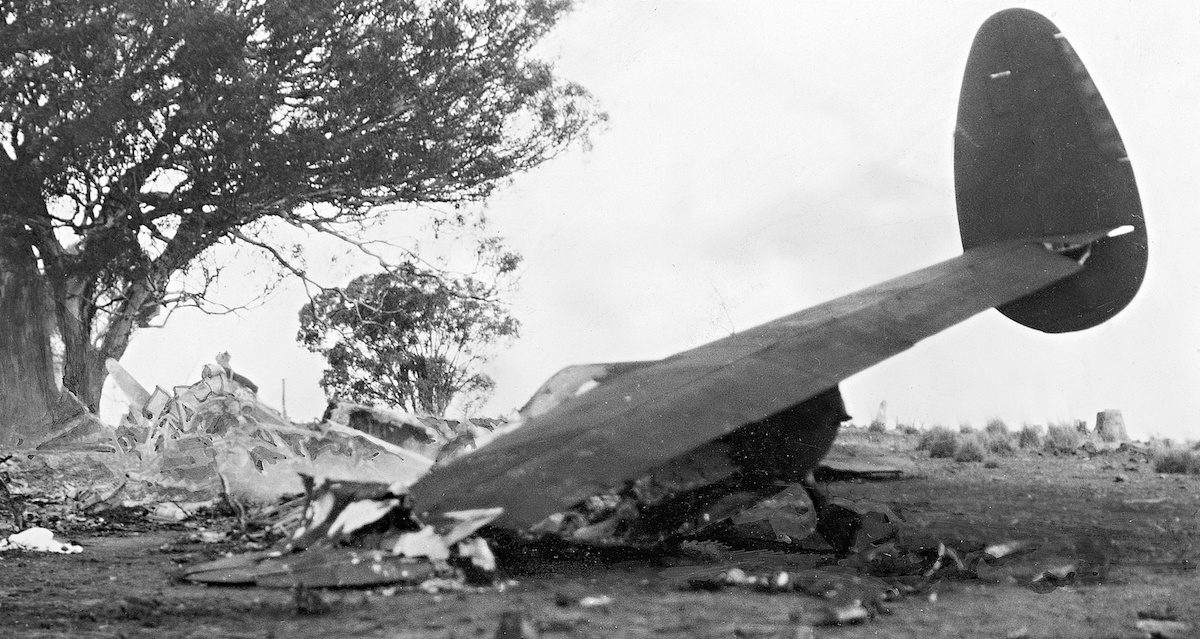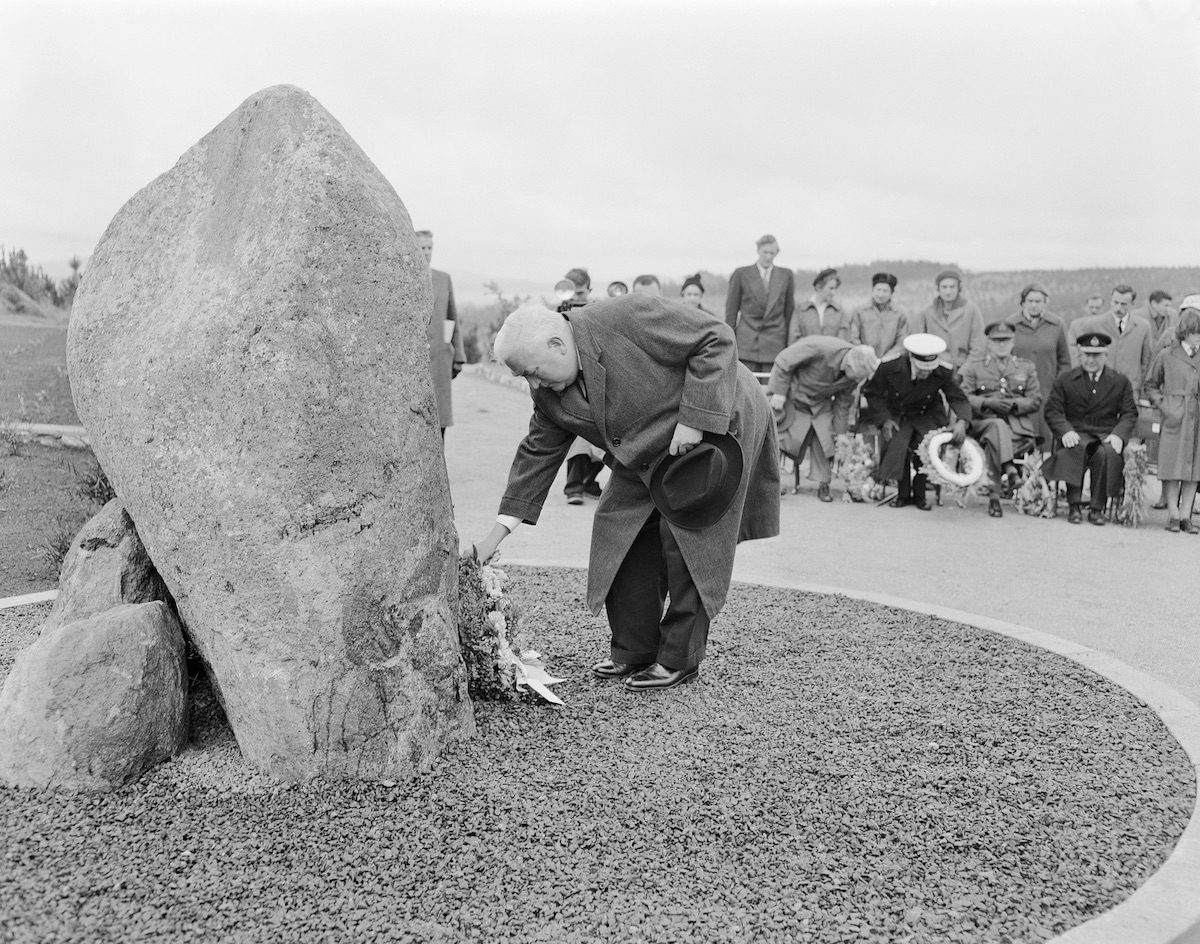
The wreckage of a RAAF Lockheed Hudson Bomber A16–97, which crashed near Canberra on 13 August 1940 killing all 10 occupants. Photo: National Archives of Australia (A11666, 118).
In a remote area of pine forest near Canberra Airport, an understated memorial commemorates 10 people killed in a plane crash during World War II.
But what happened to the Lockheed Hudson Bomber A16-97 on that dreadful day? And why did it matter so much?
In the accompanying podcast, you’ll hear from Region’s Genevieve Jacobs, social historian Marg Wade, the ANU’s Professor Frank Bongiorno and Peter Gullet, grandson of one of the victims.
At around 10:50 am on 13 August 1940, a plane approaching Canberra was observed to bank to the left, roll over and spiral nose-first into the ground. The plane immediately burst into flames, killing all on board.
The crash took the lives of Geoffrey Street, Minister for the Army and Repatriation; Sir Henry Gullett, former World War I official war correspondent and Vice-President of the Executive Council; and James Fairbairn, Minister for the Air and Civil Aviation.
All three were seasoned World War I veterans whose expertise was pivotal to Australia’s war effort during World War II. Their loss dramatically affected the Menzies government and led to a hung parliament and the Labor Party’s eventual electoral win when John Curtin became Prime Minister until the last weeks of the war.
Along with the ministers were Lieutenant General Sir Brudenell White, Chief of the General Staff; Lieutenant Colonel Francis Thornthwaite, Staff Officer to General White; and Richard Elford, Private Secretary to the Minister for Air.
What happened that day to cause the crash may never truly be known.
The Lockheed Hudson Bomber was tricky to fly and known to flip over when stalled. The Court of Inquiry into the accident found that the aircraft most likely stalled as it approached landing and lost power at a height too low for it to recover.
While the Menzies government and the Australian people mourned the loss of such key people in the war effort, it could have been even worse. Last-minute plans meant Senator George McLeay and Arthur Fadden, Assistant Minister for Supply, along with Edwin Abbott, Controller-General of Customs, choose to travel by train to Canberra rather than fly.
While the political impact was immeasurable, the personal impact also took its toll. At the time the army had not refined the process for alerting families to the loss of a loved one. Pilot Officer Richard Weisener’s wife learned of his death while reading a late newspaper edition when travelling on a Sydney train.
Richard Elford, private secretary to Minister Fairbairn chose to be on that flight so he and his wife could celebrate their wedding anniversary in Melbourne the previous evening. Elford’s mother learned about the crash by overhearing a discussion from a nearby table in a Melbourne restaurant. Aircraftman Charles Crosdale’s wife gave birth to a baby boy that very afternoon.
Pilot Hitchcock’s wife felt personal shame that her husband was blamed for the crash and took her own life some years later.

Prime Minister Menzies laying a wreath to commemorate the 20th anniversary of the crash of the Lockheed Hudson Bomber in 1940. Photo: National Archives of Australia (A1200, L36019).
The air disaster memorial, off Pialligo Avenue, is accessed on foot. Parking is just off the main road and the (mostly uphill) walk is a 3.2-kilometre round trip. Located in the pine forest, it is a place for quiet and sombre reflection on the loss of 10 lives, never forgetting the 10 families sorely impacted by the tragedy, for which many questions remain.
Original Article published by Marg Wade on Riotact.






